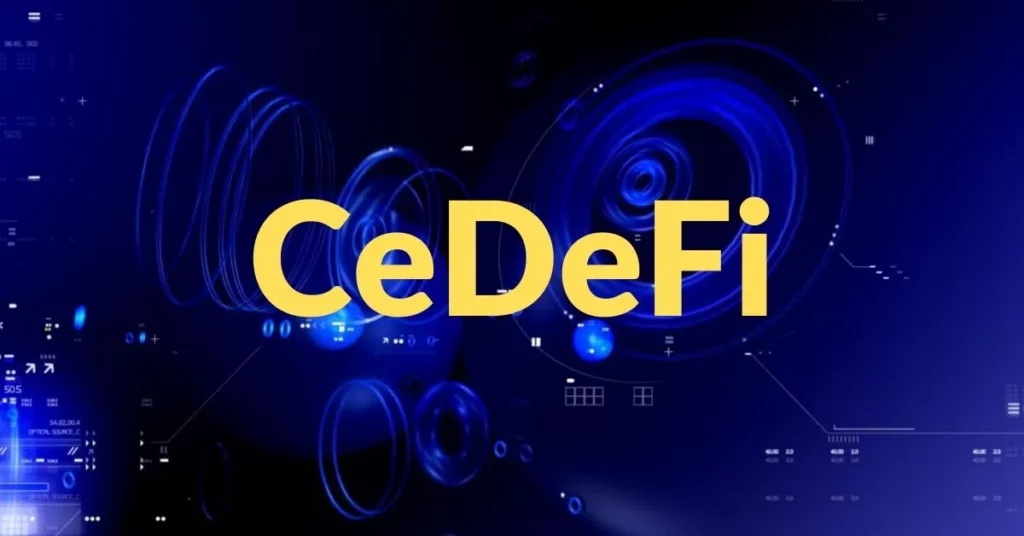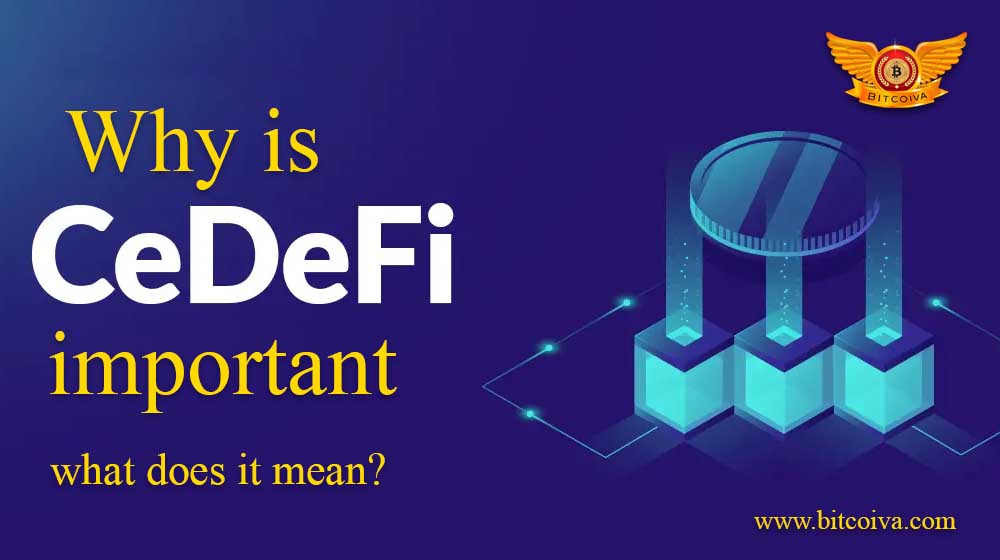Unquestionably, 2020 was the year of DeFi, exploding onto the scene in July of that year during DeFi Summer. “Dapp transaction volumes exceeded $270 billion, with 95% accounted for by Ethereum’s DeFi ecosystem,” claims Dappradar’s 2020 report. A transparent, trustless financial revolution ushered in by decentralised finance protocols on several fronts, including lending and borrowing, derivatives, insurance, stablecoins, DAOs, and decentralised crypto exchange India. It is obvious that the sector has staying strength because the DeFi ecosystem currently has over $250 billion of value locked up. Despite the fact that DeFi is fundamentally more decentralised than its centralised competitors, established financial institutions are still looking for ways to participate in the expanding DeFi ecosystem.
What Exactly is CeDeFi
CeDeFi combines the best elements and characteristics of CeFi and DeFi into one financial system. Financial systems have divided into centralised finance (CeFi) and decentralised finance for some time (DeFi). DeFi built on cryptocurrency India and smart contracts, whereas CeFi a conventional, bank-enabled finance system.
Unified and decentralised finance are combined new system known “CeDeFi,” which has emerged and gaining popularity. What is CeDeFi and how does it operate, then?
CeDeFi, which centralised and provides the same capabilities as DeFi protocols, enables users to access DeFi products. Such as decentralised cryptocurrency exchange India, liquidity aggregators, yield farming tools, and lending protocols while retaining the benefits of CeFi systems.
CeDeFi initiatives tend to more centralised than DeFi, which has no access restrictions and may used by anybody. They frequently have only one or a limited number of rulers, which gives them more power (similar to a CeFi).
The CeDeFi ecosystem, a combination of centralised and decentralised models, attempts to enhance the conventional cryptocurrency model by enabling quicker transactions, increased security, a higher number of transactions, and relatively lower costs than conventional systems.
What Exactly is DeFi
A wide range of financial services and products based on blockchain technology referred to as DeFi in the public blockchain arena. It operates independently of conventional centralised structures like banks and credit cards.
Decentralized applications (DApps), which function on a peer-to-peer basis and do away with centralised authority like banks, credit card firms, or brokers, make these accessible. Anyone can use DeFi to gain access to alternative financial systems, including borrowing and lending.
Since all crypto currency trading platform in CeFi handled by a single exchange, users aren’t actually in control of their private keys or possession of their cryptocurrency. They are also subject to the terms and conditions, costs, and gas surcharges of the exchange.
DeFi users, on the other hand, have total control over their money because no centralised authority manages transactions. Instead, a protocol built on the blockchain enables individuals to purchase, sell, store, and trade their money anyway they see fit. Both DeFi and CeFi have advantages and disadvantages. Contrary to DeFi, CeFi makes it simpler to convert money to cryptocurrency. DeFi, however, does not require a KYC procedure and is permissionless.
Who Launched CeDeFi onto the Cryptocurrency Scene
CeDeFi has grown significantly as a result of Binance, who CEO, Changpeng Zhao, has first used the word in September 2020 during the introduction of Binance Smart Chain.
Binance also understood that it had to develop a different blockchain network to compete with the top cryptocurrency in India, like Ethereum and its DeFi ecosystem given that Ethereum’s appeal is due to the capability of smart contracts. As a result, BNB Smart Chain, an Ethereum fork with improvements for low fees and high transaction throughput, replaced Binance’s previous blockchain network as the company’s primary blockchain network.
Decentralization and censorship resistance sacrificed. But it still appears to be working. Despite being condemned by proponents of decentralisation, BNB Chain had exponential growth beginning in September 2020 as a result of its speedy project funding, which contributed to the emergence of CeDeFi.
Investors can create hedged yield streams through current digital strategies employing Midas’ hybrid CeDeFi investing platform in addition to Binance for guaranteed passive income. In addition, Midas asserts to have a sizable backend infrastructure in a volatile cryptocurrency market that works to safeguard and hedge the front-end investment possibilities made available to private investors.
The Midas digital environment has safeguarded by integration with the extremely secure Fireblocks cryptocurrency custody and transfer technology. FireBlocks offers commercial-grade digital protection for assets under stored custody.

What Benefits does CeDeFi Offer
Cheaper costs, better security, accessibility, speed, and lower cost are a few benefits of CeDeFi.
Users can trade CeDeFi crypto assets without a centralised exchange thanks to CeDeFi’s novel approach to decentralised banking. This suggests that consumers may conduct business directly with one another without the assistance of a middleman.
Lower fees are one of CeDeFi’s main advantages. Since there are fewer middlemen in CeDeFi transactions than on comparable platforms, especially on non-Ethereum-based networks, the cost of transactions is cheaper.
For instance, Ethereum has extremely expensive gas prices, with DEX transactions costing hundreds of dollars.
Delays are frequently brought on by network congestion difficulties. Contrarily, Binance CeDeFi allows users to take fees in a matter of seconds, has substantially lower fees, and speeds up transactions.
Strengthened security is another noteworthy benefit. Due to the decentralised nature of the CeDeFi network, hackers will have a much tougher time breaking into it than they would with conventional banking systems.
CeDeFi is also very easy to use since anyone with an Ethereum wallet can utilise the CeDeFi protocols. It presents confirmed trading choices that have been examined by a number of different criteria, including KYC, fees, and more, lowering entrance barriers for less experienced users and allowing them to learn more about DeFi.
CeDeFi
The processing of financial transactions with CeDeFi can be done far more quickly than it is possible with conventional financial systems. Because CeDeFi doesn’t have to wait for approval from a third party, which frequently takes days or weeks, this is possible.
In addition, CeDeFi technologies are more adaptable than traditional financial systems, enabling them to be customised to each user’s needs. For instance, the automated yield portfolio (YAP) method by Midas reduces the effort of purchasing specific crypto assets by exposing investors to a number of assets. Most importantly, YAPs undergo monthly rebalancing to maximise earnings at no additional cost to investors.
This rebalancing enables Midas to profit from market fluctuations in the hope of delivering steady portfolio growth over the long term by securing profits from better-performing assets while reinvesting in the underperforming assets.
Additionally, safer transactions are feasible since CeDeFi exchanges rigorously assess and audit projects and tokens. Compared to traditional payment systems, CeDeFi offers greater privacy because its decentralized network makes it more difficult for third parties to monitor user transactions.
Visit us at: www.bitcoiva.com

